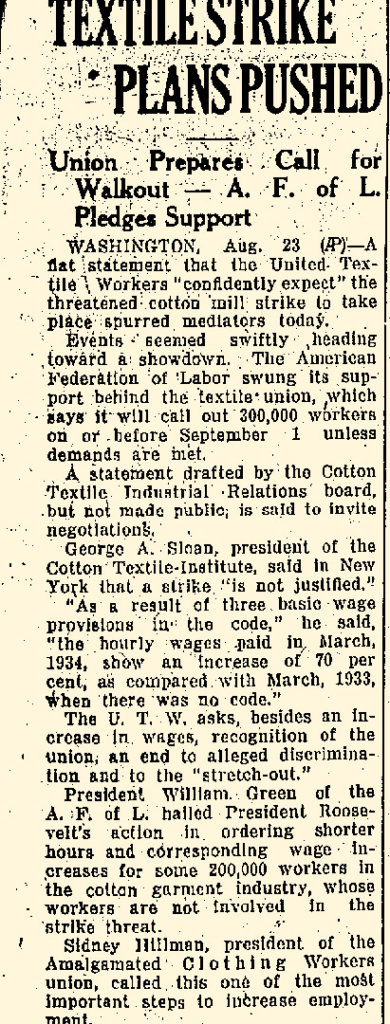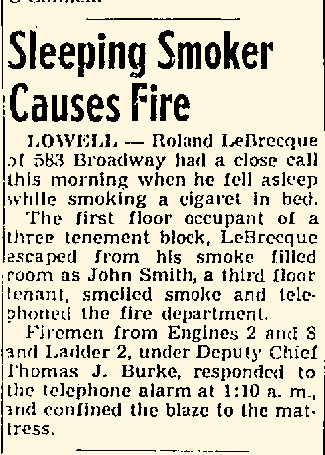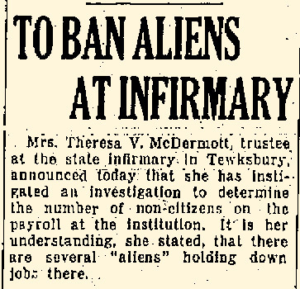Our Immigrant Past
Today, sixty to about one hundred twenty years later, we might have some difficulty trying to capture the daily lives of our parents, grandparents and great grandparents as we surround ourselves with iPods, moment-to-moment news, portable phones, text messaging and, of course, digital, cable television programming.
Lowell, Massachusetts played an important role in the launching of the Great Industrial Revolution in our country. It was in 1830 that this story began. A country built upon an agricultural economy started to flex some technical muscles and started to compete with the former mother country of England in matters of textile production.
The war of 1812 had made it clear to British kings that they no longer had any claims on this land. We, Americans, planned to produce our own goods and it just happened that superior, textile goods produced cheaply, and then sold on a worldwide market created a mighty profit for those entrepreneurs, who were willing and able to compete.
Curiously enough, my hometown of Lowell was created from the fields of Chelmsford farmers in the year 1830. A venerable, pre-Revolutionary War town was carved nearly into two portions with the land along the Merrimack River and the Pawtucket Falls going to the industrialists, who were intent upon creating a mighty, new industry. The town of their invention would be Lowell named after one of these movers and shakers.
Such is the romantic and historical background that transformed the lives of hundreds of thousands of textile mill workers, refugees and immigrants mostly, in the following two hundred plus years.
Today however, do we sometimes reflect, even for a brief moment or two, about the much different lives of our own relatives, who somehow managed to live their full allotted years immersed in neighborhoods, ethnic environments, mill jobs and careers that simply no longer exist?
A Place Far-Away and Long Ago
Imagine,, if you can, a time when electricity, gas heating and indoor plumbing were just being introduced into the homes of a select few towns people, who were able to afford such luxuries. Imagine, then, paved city streets instead of mud-soaked ruts and no sidewalks.

This briefly describes the urban landscape of my world-renown home-town of Lowell, Massachusetts in the 1910s.
How did my maternal grandfather, Pépère Charbonneau, enjoy his years in those factories? Was my Dad, Ben Bolduc, happy or even content putting in this forty-hour weeks working under the ideal conditions for spinning cotton fiber into cloth, i.e., 90 degrees Fahrenheit and 90 percent humidity? Didn’t those work condition drag him down and make him feel rather listless and fatigued? Did Aunt Florence during World War Two feel particularly patriotic when as a mill worker she was spat upon by her supervisors, who felt only scorn for these mill rats?
Postcard from the Lowell Historical Society sets Reflections Going
These are some of the questions that came to me when I first received a postcard from my nephew, Eric Thurston, showing a group photograph of workers and managers – both men and women – captured by a company photographer in one of Lowell’s many textile factories in the year 1900. It depicts (photo not presently available) fifty or more people of varying importance looking up into the eternal lens of a industrial camera ready to capture for posterity the working souls of Lowell’s eager factors of production.
Fourteen hours of work per day with half days on Saturday meant 77 hours of work per week. Certainly, there was no room for slackers or anyone weak of heart or industrial enthusiasm.

Just how did our not-too-distant ancestors manage in a world of intense competition for laborsaving approaches to the production of cotton cloth, canvas fabric, parachute material and still have families, enjoy their church activities and religious privileges, have fun on holidays and, generally, reach a ripe old age with respect and satisfaction?
Daily life in our country was both simpler and, at times, more complicated for these folks. Of course, I can only report on stories that were passed onto me by close relatives and friends, who actually experienced those days that I only know through cinemagraphic, celluloid evidence or Brownie camera photos. In this sense, these pages are really memoirs of memoirs but that’s the best I can do with my limited experience. How neat it would be to fly gently over the years of my relatives lives and to see, hear and feel how it was. I mean, really was!
It could have been my own generation next
As I emailed an elementary school and high school friend, years ago, it was only by the grace of a benevolent Cosmos, that we, two, did not need to find our livelihood in such desperate, textile sweatshops with no health benefits, no paid vacation time, no unemployment compensation and, also, no retirement benefits.

However, had the Fates not intervened, we would have been given permission to use the toilets had we requested such a privilege, I believe.
The industrial climate in Lowell was strict, but still charitable in its own way.
Note: For more information on Lowell’s history, the reader is invited to visit the link to the University of Massachusetts Lowell Libraries pictorial site.

